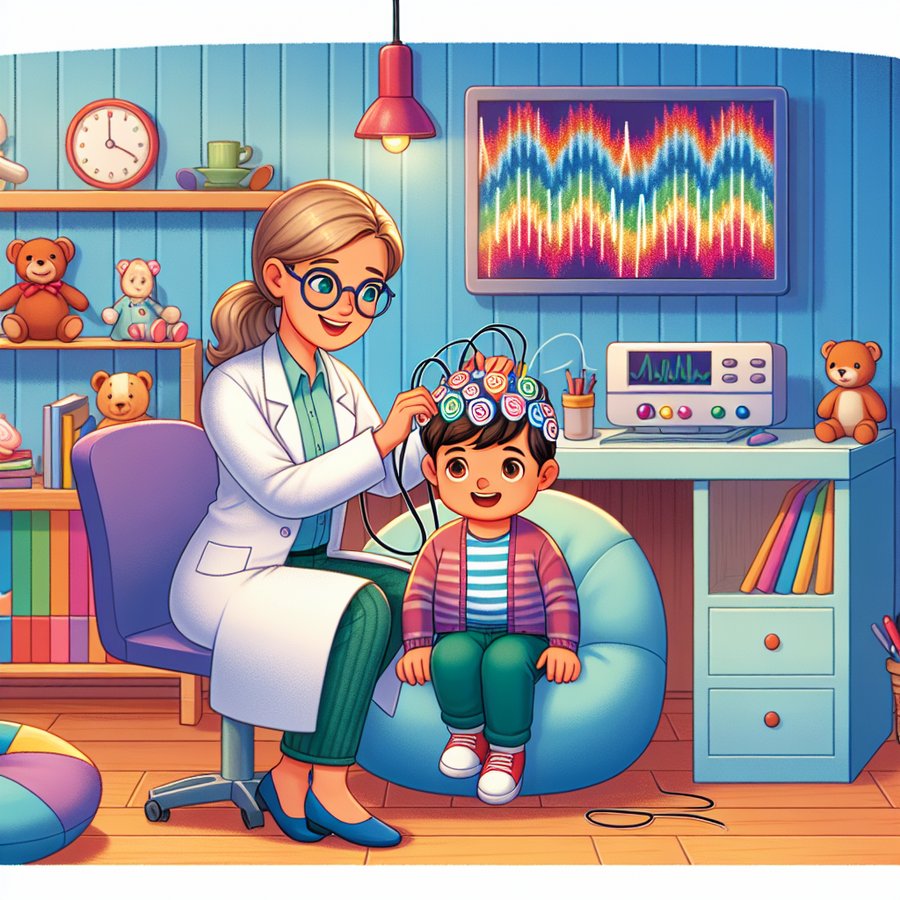Scalp Electroencephalogram (EEG) is a critical diagnostic tool used to evaluate the electrical activity in the brain. Understanding how it works and when it might be necessary for your child can seem daunting, especially for new parents. This comprehensive guide aims to demystify Scalp EEG, providing you with the knowledge you need to navigate this aspect of your child’s healthcare confidently.
What is Scalp Electroencephalogram (EEG)?
An EEG is a non-invasive procedure that records the electrical activity of the brain through small, flat metal discs attached to the scalp. These recordings can help doctors diagnose conditions such as epilepsy, sleep disorders, and brain infections. Understanding EEG is crucial, as it can play a significant role in managing and diagnosing neurological conditions in infants and children.
Scalp EEG is particularly important in pediatrics, where it helps in identifying seizures that might not be apparent through physical symptoms alone. This procedure can be crucial in diagnosing conditions early in a child’s life, potentially preventing complications as they grow.
Why is Scalp Electroencephalogram (EEG) Performed on Babies?
Babies might undergo an EEG for various reasons, most notably to detect or rule out seizures, which in infants can be subtle and not involve the convulsions seen in older children and adults. EEGs are also used to assess brain health in babies who have experienced events like high fever or infections that could affect the brain, as well as to monitor brain activity in babies with diagnosed neurological conditions.
It’s also essential for evaluating the effectiveness of medications used to treat neurological conditions, allowing doctors to adjust treatment plans based on how well the baby’s brain responds to the current medications.
How to Prepare Your Child for a Scalp Electroencephalogram (EEG)
Preparing your baby for an EEG involves a few simple steps to ensure the process is as smooth as possible. First, it’s important to keep your baby awake for a few hours before the test if the EEG is scheduled during a nap or bedtime, as sleep can be an important part of the assessment. You might also be asked to wash your child’s hair the night before the test but avoid using any hair products that could interfere with the electrodes.
During the procedure, your baby will sit on your lap or lie down. The technician will attach the electrodes to the scalp using a special paste. While the test is painless, some babies may feel uncomfortable due to the unfamiliar sensations or the need to stay still. Bringing a favorite toy or blanket can help comfort your child during the EEG.
Interpreting Scalp Electroencephalogram (EEG) Results
After the EEG, a neurologist will analyze the recorded brain waves and identify any abnormalities. These can indicate various conditions, such as epilepsy or other seizure disorders. However, interpreting EEG results can be complex, and the presence of abnormal brain waves does not always mean a serious problem exists. It’s essential to discuss the results with your child’s doctor to understand what they mean for your child’s health and development.
It’s also worth noting that sometimes, further testing may be required to get a clearer picture of your child’s neurological health. In such cases, your doctor will guide you through the next steps and any additional procedures that might be needed.
Common Concerns About Scalp EEG in Babies
Many parents worry about the need for a Scalp EEG and what the procedure entails. Concerns often revolve around whether the test is painful or could harm their baby in any way. Rest assured, an EEG is a safe and painless procedure that plays a vital role in diagnosing and managing neurological issues in infants. The most challenging part may be keeping your baby still or awake, depending on the test’s timing.
Another common concern is what it means if your child needs an EEG. It’s important to remember that while an EEG can be critical in diagnosing neurological conditions, its use does not automatically indicate a severe problem. It’s a diagnostic tool that provides valuable information about your child’s brain activity, helping healthcare providers make the best decisions for your child’s care.
Resources and Support for Parents
Navigating your child’s health care, especially when it involves specialized procedures like an EEG, can be overwhelming. Fortunately, there are resources available to help. Discussing any concerns with your child’s healthcare provider can provide reassurance and clarity. Additionally, there are numerous online resources and support groups where you can connect with other parents who have gone through similar experiences. Educating yourself about your child’s condition and the diagnostic process can empower you as a parent and advocate for your child’s health.
For more information on Scalp EEG and other related topics, consider visiting Epilepsy in Babies, Sleep Apnea in Babies, and Developmental Milestones on our website. These resources can provide additional insights into the conditions an EEG can help diagnose and what to expect as your child grows and develops.













